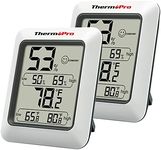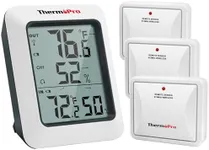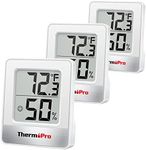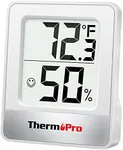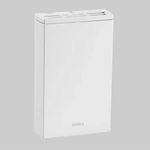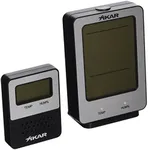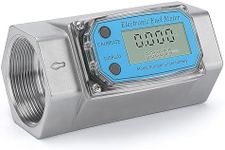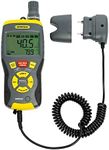Buying Guide for the Best Humidity Testers
Choosing the right humidity tester is essential for ensuring accurate and reliable measurements of moisture levels in various environments. Whether you need it for home use, industrial applications, or scientific research, understanding the key specifications will help you make an informed decision. Here are the main factors to consider when selecting a humidity tester.AccuracyAccuracy refers to how close the humidity tester's readings are to the actual humidity levels. This is important because precise measurements are crucial for applications like climate control, storage conditions, and scientific experiments. Accuracy is usually expressed as a percentage, such as ±2%. For general home use, an accuracy of ±5% might be sufficient, while industrial or scientific applications may require higher accuracy, such as ±1% to ±2%.
RangeThe range of a humidity tester indicates the span of humidity levels it can measure, typically expressed as a percentage (e.g., 0% to 100% RH). This is important because it determines the environments in which the tester can be used. For example, a tester with a range of 20% to 80% RH might be suitable for home use, while one with a range of 0% to 100% RH would be better for more diverse or extreme conditions. Choose a range that covers the expected humidity levels in your specific application.
Response TimeResponse time is the duration it takes for the humidity tester to provide a stable reading after being exposed to a new humidity level. This is important for applications where conditions change rapidly, and timely data is needed. Response times can vary from a few seconds to several minutes. For dynamic environments, a faster response time (under 30 seconds) is preferable, while for more stable conditions, a slower response time may be acceptable.
CalibrationCalibration ensures that the humidity tester provides accurate readings over time. This is important because sensors can drift and lose accuracy. Some testers come with a built-in calibration feature, while others may require manual calibration using a reference solution. For critical applications, choose a tester that is easy to calibrate and comes with clear instructions or calibration kits.
Display and ReadabilityThe display and readability of the humidity tester affect how easily you can interpret the readings. This is important for ensuring that you can quickly and accurately understand the humidity levels. Look for testers with clear, backlit displays, large numbers, and intuitive interfaces. For users who need to take readings in low-light conditions, a backlit display is particularly useful.
Data Logging and ConnectivityData logging and connectivity features allow the humidity tester to record measurements over time and transfer data to other devices. This is important for tracking trends, analyzing data, and maintaining records. Some testers come with built-in memory, USB ports, or wireless connectivity options like Bluetooth or Wi-Fi. Choose a tester with data logging capabilities if you need to monitor humidity levels over extended periods or integrate the data with other systems.
Durability and Build QualityDurability and build quality determine how well the humidity tester can withstand physical wear and environmental conditions. This is important for ensuring the longevity and reliability of the device. Testers used in harsh environments, such as industrial settings or outdoor applications, should be rugged and possibly water-resistant. For home or office use, a less robust build may be sufficient.
